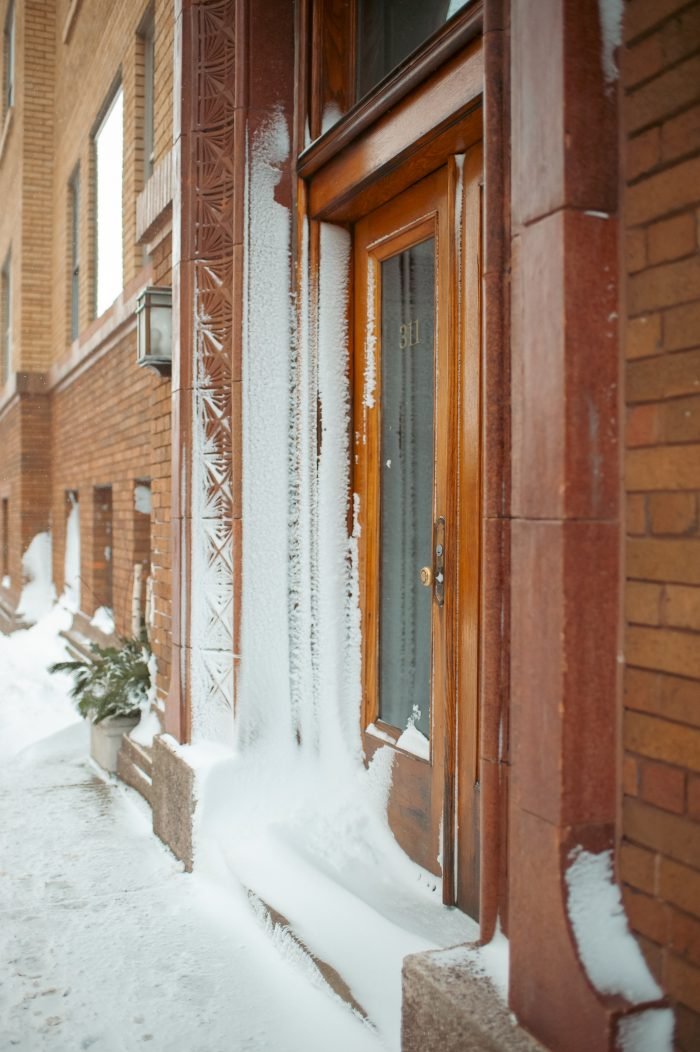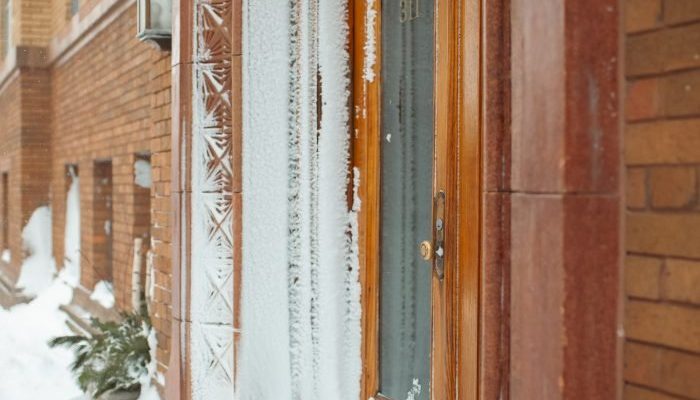
Honestly, it’s one of those things you don’t notice until it gets bad—and then you’re scrubbing door levers or keypad buttons with a rag, wondering what changed. Let me explain: winter brings a whole mix of unique problems that team up to make your exterior door hardware a dirt magnet. It’s not just bad luck or poor cleaning habits. There’s real science (and some simple everyday logic) behind it.
So why does your keypad deadbolt, round knob, or lever handle seem so much filthier in winter than any other time? Let’s break down what’s really going on, and what you can do about it.
Why Dirt Builds Up Faster on Exterior Door Hardware in Cold Weather
Here’s the thing: winter changes everything about how dirt, moisture, and your hands interact with your door hardware. When it’s cold outside, surfaces get colder too. Metal, especially, holds onto the chill. This can make condensation a bigger problem, which is like rolling out the red carpet for dust and grime.
Picture this: you come in from the sleet, brush your gloves over the deadbolt, and a little bit of snow melts onto the lever. The moisture mixes with salt or whatever was on your glove, then freezes again. Now, every time someone touches the door, more residue builds up. It’s almost like the hardware is running a dirt-collecting experiment all winter long.
At the same time, frigid temps can make cleaning feel pointless. You wipe the handle, but greasy spots or streaks just smear around or refreeze. This lets grime nestle into the tiny imperfections in the metal or plastic, making it even harder to clean off next time.
How Winter Weather Affects the Oils and Residue on Your Hands
You might be wondering, “Am I really making the problem worse every time I touch the door?” Honestly, yes—especially in winter. Human skin produces more oils in cold, dry weather. Combine that with thicker lotions, creams, or chapsticks we all use to fight dryness, and you’re leaving behind a greasy fingerprint every time you open the door.
This oily residue acts like glue, grabbing onto dust, grit, and outdoor salt. When it’s warm, these residues might dry up or wear away quickly. But in winter, those oils get sticky, especially when mixed with a little condensation from your breath or snow.
- If you’re using a keypad remote or digital deadbolt, the buttons get grimy extra fast, since plastic and rubber attract static, which draws dust right in.
- Handles and locks with textured finishes (think matte black or “aged” brass) trap even more grime in tiny grooves.
- Even gloves don’t help much—they pick up grit, then rub it onto the hardware with every turn of the knob.
So, every time you fiddle with your keys, punch in a code, or reset your smart lock, you’re adding another layer to the gunk.
Why Salt, De-Icer, and Road Grit Are Your Door’s Worst Enemies
Let me explain how the stuff meant to keep you safe from ice is actually working against your door hardware. Road salt and de-icer chemicals get everywhere in winter. They hitch a ride on your boots, coat sleeves, gloves—sometimes even wafting in the air as cars drive by.
Once inside, tiny crystals and gritty sand particles cling to your hands and outerwear. Every time you twist the doorknob or press a remote entry button, you grind those gritty bits right onto the surface. Salt especially is corrosive, and tiny scratches help grime settle in deeper.
Even if you don’t see it, every day brings a little more salt and sand to your hardware, making it duller and harder to clean as winter drags on.
Plus, if salt or de-icer gets into the seams of your remote lock or keypad, it can mess with the battery contacts or code buttons. That leads to issues like sticky keys, unresponsive electronics, or just plain ugly buildup you can’t wipe away.
Condensation and Freezing: The Hidden Traps for Dirt
Temperature swings do strange things to metal, glass, and plastic. When you bring a grocery bag home on a snowy day, you might notice a thin layer of condensation forming on the door hardware. This happens because your warm breath or hands meet the chilly metal.
That moisture acts like double-sided tape for dust, lint, and even pollen that floats around indoors. And when the temperature drops again (say, overnight), that damp residue can freeze, trapping dirt right onto the hardware. It’s like a cycle: thaw, stick, freeze, repeat.
- Keypad locks get especially grimy when condensation seeps into the number pad and freezes overnight, causing sticky buttons or confusing error codes.
- Remote entry devices can get gritty around the seams, making it tough to reset or replace the battery in spring.
- Even simple hardware, like a classic Schlage doorknob, can show streaky fingerprints and water spots after just a few cold mornings.
So if your door seems to “collect” dirt just when you want it to stay cleanest, you’re not imagining things.
Why Winter Cleaning Habits Make the Situation Worse
Let’s be honest: nobody wants to stand outside in freezing temps, scrubbing the keypad or tightening the screws on a freezing lock. Most people clean less in winter—or at least, they clean with less effort. This gives dirt, grime, and oils more time to work their way into crevices.
Even when you try to clean, the products or wipes you use may not work as well. Windex and other cleaners can freeze or streak, leaving behind residue that attracts more dirt later. And, if you skip drying the hardware properly (because you’re in a rush to get inside), you leave behind water that freezes, collecting more dust after every thaw.
Common cleaning mistakes in winter:
- Using cold water, which freezes quickly and traps grit in place.
- Leaving cleaner residue to “dry” on its own, resulting in sticky surfaces.
- Forgetting to clean high-touch spots like remote keypads, battery covers, or the base of the handle.
All of this adds up: less frequent cleaning + tougher grime + winter conditions = extra-dirty door hardware.
The Role of Static Electricity in Attracting Dust
Here’s something you might not think about: Static electricity builds up more in dry winter air. Ever get a little zap when you touch your door after walking across the carpet in socks? That same static can pull dust and lint right out of the air, making it stick to anything metal or plastic—including your door handles, code pads, and remotes.
Plastic and rubber parts, like covers for keyless entry systems or remote fobs, are especially prone to building up static. Every time you touch the hardware (or even just the remote in your pocket), you help charge it up a little more. Before you know it, every bit of dust that floats by is glued on tight.
Static isn’t just annoying—it actually forms an invisible “net” for winter grime, especially around electronic keypads, sensor buttons, or the seams of battery covers.
So, while you can’t see static, it’s a sneaky partner in making your winter hardware look (and feel) dirtier than ever.
Comparing Winter Grime: Universal Issues vs. Brand-Specific Problems
While every exterior door setup gets dirtier in winter, some brands and types have their own quirks. Honestly, there’s no universal remote or hardware that’s totally immune, but how the problem shows up can vary a lot.
- Keypad locks from brands like Kwikset: The soft rubber or slick plastic attracts more oils and holds onto grime, especially on the number pad. If the battery runs low or the code gets stuck, dirt inside the seams can make troubleshooting harder.
- Traditional metal knobs from Schlage: These often show streaks and water spots. Their finishes (like antique brass or matte black) can trap salt and sand in small scratches.
- Universal or off-brand remotes: These are often made from cheaper plastic. Their seams are less precise, so they’re more likely to get clogged with grit and need frequent resets or battery changes after winter.
If you’re swapping brands or choosing new hardware, think about whether you want a slick, easy-to-wipe surface (which can show more fingerprints) or a textured, more forgiving finish (which can hide grime but trap more of it). Either way, no system is totally “dirt proof” in the cold.
Tips for Keeping Your Exterior Door Hardware Clean in Winter
So what can you actually do about all this? The good news is, a few easy habits can make a big difference.
- Wipe hardware with a dry, microfiber cloth once a day: This lifts away oils and dust without adding more moisture or static.
- Clean stubborn grime with a damp (not wet) cloth and mild soap: Avoid harsh chemical sprays that can freeze or leave streaks.
- Use anti-static wipes on remotes, keypad buttons, and plastic parts: This reduces the invisible static “net” that collects dust.
- Dry hardware thoroughly after cleaning: Don’t let water sit or freeze on the surface.
- Store spare remote fobs or backup batteries inside, not in freezing outdoor lockboxes: Cold and moisture make plastic stickier, and grime can get inside the seams.
A little regular effort can keep your exterior door hardware, whether it’s a high-tech code lock or a classic metal knob, looking sharp even on the slushiest days.
Bringing It All Together: Why Winter Really Is Harder on Your Door Hardware
After a few months of cold, wind, and salt, it’s no wonder your door handle or keypad looks rough. All those little factors—chilly metal, sticky hands, road salt, and even hidden static—add up quickly. And because winter makes us all lazier about cleaning, it’s easy for grime to get really comfortable.
The good news? Knowing why your exterior door hardware attracts more dirt in winter means you can do something about it. Whether your setup is a fancy Schlage keypad, a tried-and-true Kwikset knob, or a budget-friendly universal remote, regular care and some smart cleaning habits will help you stay ahead of the winter mess.
So next time you find yourself scrubbing grime off your door handle in February, you’ll know: it’s not just you, and it’s definitely not just bad luck. Winter’s just uniquely tough on hardware—but a little know-how goes a long way.
